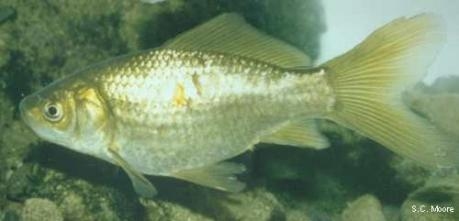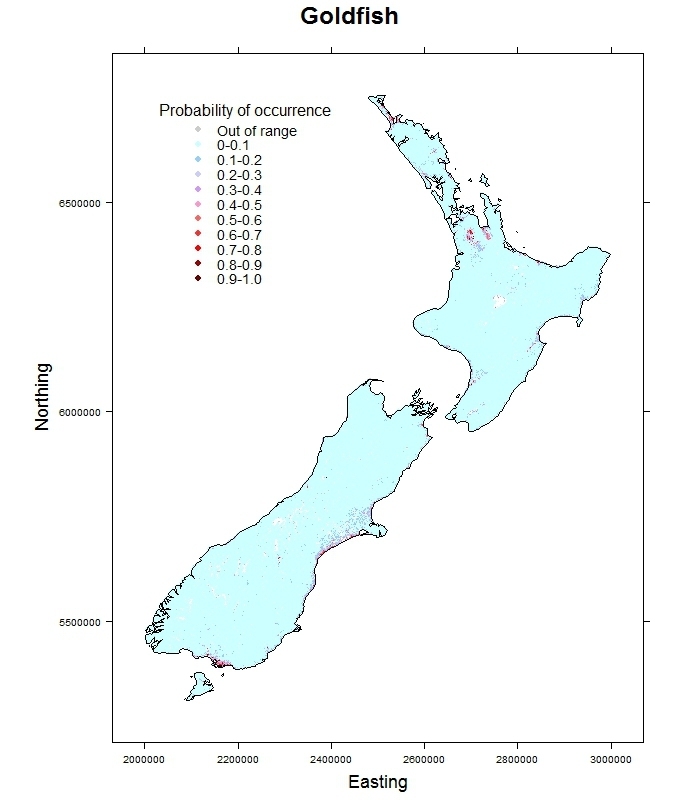Goldfish
Carassius auratus (Linnaeus, 1758)

Most people know goldfish as a popular aquarium fish. Feral goldfish lack the bright colours, bulging eyes and feathery fins of their domestic relatives, but are nevertheless the same species of Cyprinidae. Goldfish have no mouth barbels, a feature that distinguishes them from many of the other Cyprinidae present in New Zealand. The scales are large and the dorsal fin has a long base and 14–20 rays. There are also several thicked fin rays at the front of the dorsal fin, and the last and largest of these is strongly serrated. Wild fish are usually a dark bronze colour.
Goldfish generally live in still waters (ponds and lakes), but also inhabit slow flowing rivers and streams. Spawning occurs in spring and summer when water temperatures exceed about 15°C. The eggs are very small and are spawned in huge numbers. They adhere to aquatic plants and hatch about a week later. There is no parental care of the eggs or larvae. Goldfish are omnivorous and will feed on plant material, detritus, small insects and crustaceans. They commonly reach 150–200 mm in length.
Goldfish were first brought to New Zealand in the late 1860s. Aquarists and breeders carried out further introductions and goldfish are now widespread and well established in the North Island. Their South Island distribution is more restricted, but recent surveys by the Department of Conservation have shown that they are in Nelson, central Otago, Southland and the West Coast. In the early 1900s, feral goldfish populations in central North Island lakes were important to the Maori as a food fish.
![Goldfish distribution map [2024]](/sites/default/files/styles/wide/public/2024-02/Goldfish.jpeg?itok=QW9rNPhS)

